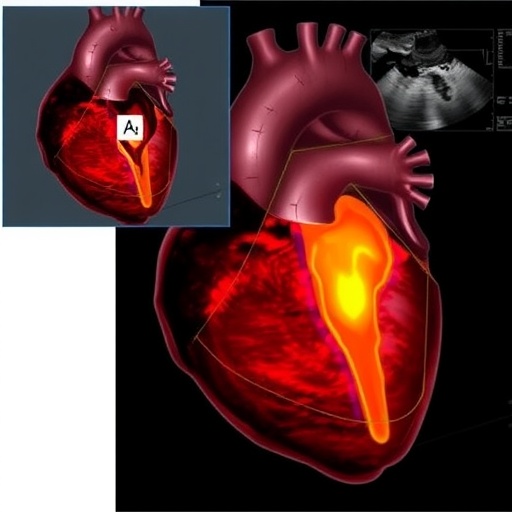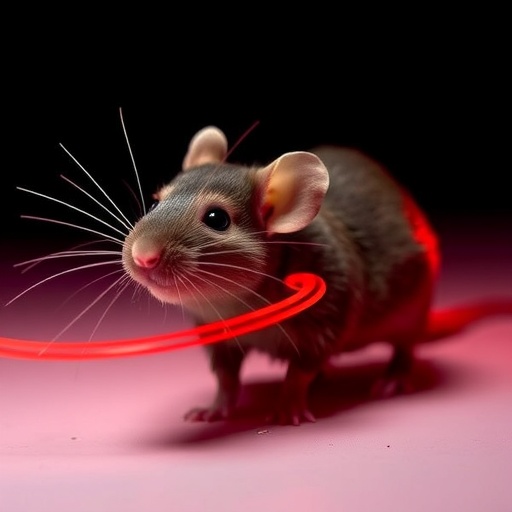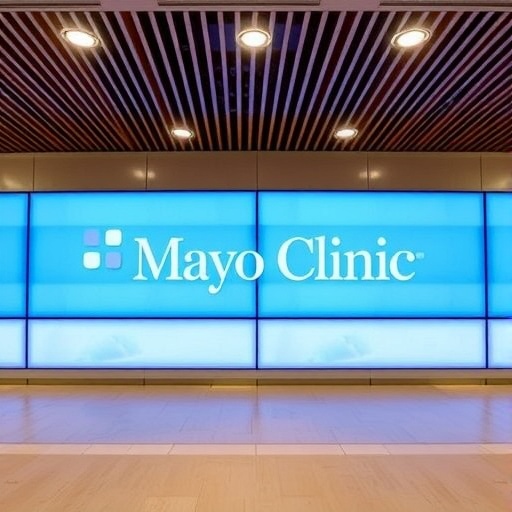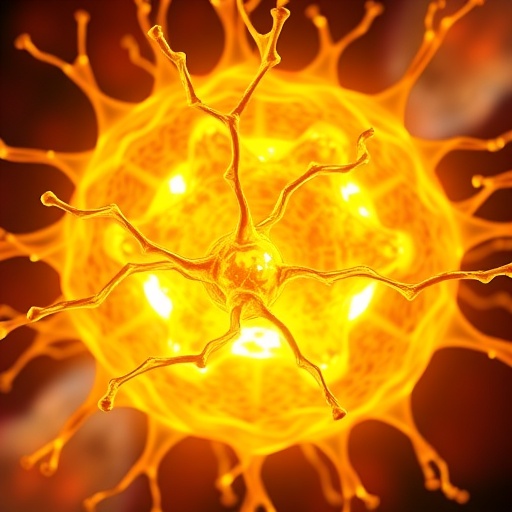PROTECT YOUR DNA WITH QUANTUM TECHNOLOGY
Orgo-Life the new way to the future Advertising by AdpathwayIn the ever-evolving field of optical microscopy, the ability to localize single molecules with extreme precision has been a formidable challenge that researchers continuously strive to overcome. A groundbreaking study recently published by L.A. Masullo in Light: Science & Applications unveils a novel approach that fuses structured illumination with structured detection, pushing the boundaries of single-molecule localization and imaging. This innovative technique promises to revolutionize how researchers visualize molecular landscapes, opening new avenues in molecular biology, nanotechnology, and biophysics.
The crux of this advancement lies in the strategic manipulation and synchronization of light during both the illumination and detection phases of the imaging process. Traditionally, super-resolution fluorescence microscopy techniques rely heavily on either structured illumination microscopy (SIM) or highly sensitive detection schemes independently. Masullo’s approach ingeniously intertwines these elements by generating spatially patterned excitation light that interacts with the target molecules in a highly controlled manner, coupled with a structured detection system capable of discerning subtle spatial variations in the emitted fluorescence signal.
At its core, structured illumination involves projecting a known light pattern—usually stripes or grids—onto the sample. This imposes spatial frequency components that, when computationally decoded, enhance resolution beyond the diffraction limit of conventional microscopy. However, the novelty in Masullo’s method is the coupling of this patterned excitation with a detection system that does not simply collect light passively but actively incorporates spatial modulation. This dual structuring of both excitation and detection channels exploits interference effects and spatial encoding that dramatically sharpens the positional information extractable from single fluorophores.
The implications of this are profound. Precisely localizing single molecules in biological systems enables researchers to capture dynamic processes with unprecedented sensitivity and spatial accuracy. For example, tracking the movement of a protein involved in cellular signaling can illuminate mechanisms behind disease progression or therapeutic response. The enhanced resolution afforded by this structured duality surpasses previous limits, reducing localization uncertainties and improving the fidelity of molecular reconstructions.
Delving deeper into the technical underpinnings, Masullo’s work constructs a framework where both excitation and detection fields are mathematically modeled and experimentally implemented to produce a composite point-spread function (PSF) with tailored spatial features. This tailored PSF harnesses interference patterns derived from the overlap of structured illumination and anisotropic detection sensitivity, encoding positional data within intensity distributions in a previously untapped manner. Consequently, the extraction algorithms can decipher molecular locations with greater accuracy by deconvoluting this enriched spatial information.
Moreover, this approach demonstrates a remarkable robustness against background noise and photon scarcity, two persistent hurdles in single-molecule imaging. By modulating both illumination and detection fields, the signal-to-noise ratio can be dynamically enhanced, enabling reliable detection even under challenging experimental conditions. This quality is especially important for live-cell imaging where phototoxicity and dye photobleaching limit photon budgets.
The experimental validation presented by Masullo involves a sophisticated optical setup integrating spatial light modulators (SLMs) for dynamic pattern generation and specialized detectors capable of spatial filtering. The results showcase consistent and repeatable localization improvements, confirming that the theoretical advantages translate into practical gains. Comparative analyses against established methodologies further cement the efficacy and potential of this technique.
In the broader context, this research taps into the fundamental physics of light-matter interaction, leveraging spatial coherence and interference effects not only to visualize but to encode molecular positional information with unprecedented granularity. Such insights blur the boundary between illumination and detection, traditionally discrete stages, now considered harmonized components of a singular information-rich imaging process. This paradigm shift in microscope design signals a new chapter in super-resolution microscopy.
Furthermore, Masullo’s study highlights the potential to customize illumination and detection patterns for specific experimental demands. Instead of static or uniform light distributions, adaptive patterns can be tailored to optimize localization amid complex sample environments, heterogeneous molecular distributions, or dynamic biological processes. This adaptability affords researchers a versatile tool capable of molding itself to the nuances of their scientific questions.
Another notable advantage of this method is its compatibility with existing fluorescent markers and microscopy infrastructure, making it an attractive upgrade pathway for laboratories worldwide. Unlike some super-resolution methods necessitating exotic fluorophores or highly specialized hardware, structured illumination combined with structured detection can often be retrofitted into conventional fluorescence microscopes with moderate enhancements.
Looking forward, the integration of machine learning algorithms with this structured dual-modality imaging system promises further leaps in performance. By training models on the rich spatial datasets produced, predictive localization and real-time image reconstruction could become feasible, dramatically speeding up experimental workflows and broadening applications in live or high-throughput imaging.
This research also opens exciting prospects for multi-dimensional imaging. Extending structured illumination and detection into volumetric, temporal, or spectral domains could unlock new classes of data, enabling simultaneous localization and characterization of molecular interactions, dynamics, and environments with nanoscale precision.
Masullo’s contribution is a testament to the power of interdisciplinary innovation, combining optical engineering, computational imaging, and molecular biology to tackle a longstanding challenge. It underscores the critical role of subtle yet profound modifications to light manipulation and detection schemas in advancing scientific observation tools.
In conclusion, the union of structured illumination and structured detection marks a significant stride toward the ideal of error-free single-molecule localization. By harnessing spatially patterned light in both excitation and detection pathways, this method enhances resolution, sensitivity, and adaptability beyond previous super-resolution techniques. Its practical implementation, adaptability, and potential for further enhancement position it as a transformative tool in microscopy.
As the research community digests and builds upon these findings, we can anticipate a new wave of discoveries at the molecular scale with implications for understanding life’s fundamental processes, designing novel therapeutics, and engineering nanoscale materials. The elegance and efficacy of Masullo’s approach herald a future where the minutiae of molecular existence become vividly observable and precisely quantifiable.
The pursuit of understanding the nanoscale world demands continual innovation in how light is controlled and interpreted. This latest advancement not only enhances our optical toolset but inspires fresh perspectives on the interplay between illumination strategies and detector design, setting the stage for next-generation microscopy technologies.
Masullo’s elegant fusion of structured illumination with structured detection paves the way for a future where resolving single molecules in their native, complex environments becomes routine rather than exceptional, reshaping the landscape of nano-imaging and beyond.
Subject of Research: Single-molecule localization microscopy using structured illumination and structured detection techniques.
Article Title: Localization of single molecules with structured illumination and structured detection.
Article References:
Masullo, L.A. Localization of single molecules with structured illumination and structured detection. Light Sci Appl 14, 347 (2025). https://doi.org/10.1038/s41377-025-01980-1
Image Credits: AI Generated


 14 hours ago
3
14 hours ago
3





















 English (US) ·
English (US) ·  French (CA) ·
French (CA) ·